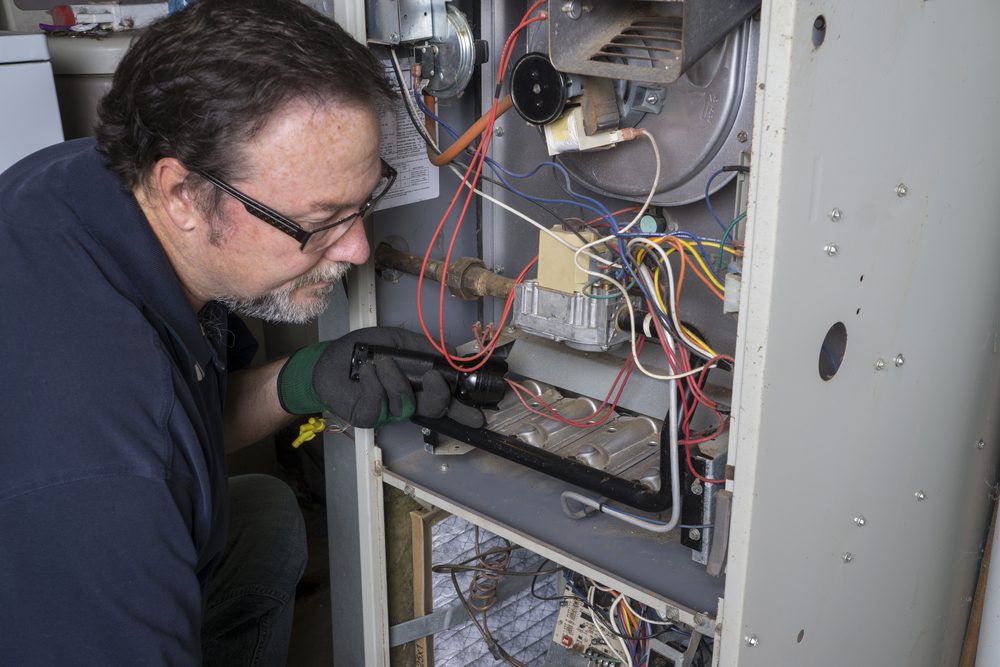As the frosty days of winter arrive, your heating unit becomes your go-to ally for a snug and comfortable home. However, when it begins to struggle, you might find yourself bundled up indoors. Let’s dive into 10 recurring challenges that can affect your warmth and share practical fixes to keep your heat source in top condition throughout the season.
1. Heating Unit Won’t Kick On
Imagine a chilly dawn, and your heating system refuses to start. Here’s what could be going wrong:
- Temperature Controller Error: The device that regulates heat might not be programmed correctly to activate your system.
- Power Disruptions: A sudden blackout or a switched-off circuit might be interrupting the unit’s energy supply.
- Fuel Delivery Problem: For units that run on gas, there might be a blockage or malfunction in the fuel line.
How to Fix It:
- Verify that the temperature controller is set to “warm” mode and adjusted to a level higher than the indoor climate.
- Inspect your household’s power panel for a disrupted circuit and restore it if necessary.
- If you think there’s a fuel delivery concern, it’s best not to handle it yourself—contact our specialists at Big H&A for a secure solution.
2. Heating Unit Operates but Lacks Warmth
Your system is active, yet the air feels frosty. Here are some potential causes:
- Burner Dysfunction: Soot or wear might be preventing the burners from generating warmth.
- Fan Control Setting: The fan might be operating independently of the warming process.
- Ventilation Obstruction: Blocked pathways can hinder the spread of heated air.
How to Fix It:
- Adjust the temperature controller to ensure the fan operates only during the warming phase, not continuously.
- Look for any obstructions around the air intake or output areas of your heating unit.
- If the burners are the issue, a thorough cleaning by a technician might be necessary.
3. Heating Unit Stops Abruptly
If your system powers on but shuts down shortly after, it could be overworking itself. Possible reasons include:
- Excessive Heat Buildup: A built-in mechanism might be deactivating the unit to avoid damage.
- Temperature Controller Placement: If the controller is in an unsuitable spot, it might misinterpret the indoor climate.
- Worn-Out Parts: Older components, like the heat detector, might be causing unexpected interruptions.
How to Fix It:
- Look for blocked air pathways or a dirty air screen that might lead to excessive heat.
- Reposition the temperature controller to a more balanced spot in your house.
- Arrange for a specialist to examine essential parts like the heat detector.
4. Heating Unit Produces Strange Sounds
Your system shouldn’t sound like a noisy orchestra. If you notice clattering, buzzing, or shrieking:
- Unsecured Covers: Shaking can cause covers or bolts to jingle.
- Fan Motor Problems: A high-pitched sound might indicate the fan motor needs oiling or a new part.
- Air Channel Shifts: Metal channels can groan as they adjust to temperature changes.
How to Fix It:
- Secure any loose bolts or covers on the heating unit.
- If the sound continues, particularly from the fan motor, a technician’s evaluation is recommended.
- Add insulation to air channels if temperature-related noises are an issue.
5. Heating Unit Can’t Keep Up with Desired Warmth
If your house never feels as warm as you’d like, your system might not be up to the task:
- Inadequate Power: The unit might not be strong enough for your home’s dimensions.
- Air Escapes: Cracks in the air channels might let warmth slip away before it reaches you.
- Temperature Controller Accuracy: A misaligned controller might not be gauging the climate correctly.
How to Fix It:
- Consult an HVAC specialist to determine if your heating unit matches your home’s needs.
- Seal any noticeable gaps in the air channels with proper materials, or hire a pro for extensive fixes.
- Calibrate the temperature controller or consider upgrading to a newer model.
6. Heating Unit Impacts Indoor Air Freshness
A struggling system can degrade the air you breathe, causing staleness or unpleasant smells:
- Grimy Parts: Debris inside the unit can spread through your living space.
- Moisture Issues: Excess dampness in the system might encourage fungal growth.
- Fuel Odor: A subtle fuel scent could suggest a minor leak or improper burning.
How to Fix It:
- Swap out or clean the air screen to minimize debris spread.
- Address any dampness to prevent fungal issues.
- If you detect a fuel odor, evacuate immediately and call for professional help.
7. Heating Unit Worsens Respiratory Irritation
If you notice more coughing or sneezing when the system is running:
- Debris in Air Channels: Built-up particles can be blown into your rooms.
- Neglected Air Screen: An outdated screen might fail to capture irritants.
- Moisture Imbalance: Excessive moisture from a system humidifier can foster irritant growth.
How to Fix It:
- Arrange for a thorough cleaning of the air channels to eliminate debris.
- Install a high-efficiency air screen designed to trap irritants.
- Fine-tune the humidifier to maintain optimal moisture levels.
8. Heating Unit Raises Safety Worries
A poorly functioning system can introduce risks to your household:
- Fuel Leaks: A leak can expose you to hazardous substances.
- Wiring Hazards: Damaged electrical connections might lead to sparks or fires.
- Excessive Heat Risks: A stressed unit might overheat and pose a danger.
How to Fix It:
- Place detectors for hazardous substances around your home and check them regularly.
- Have an electrician evaluate the unit’s electrical setup for safety.
- Routine upkeep can prevent overheating risks—our team at Big H&A is here to assist.
9. Heating Unit Fan Acts Unpredictably
If the fan either won’t run or runs excessively:
- Temperature Controller Misalignment: Wrong settings might cause the fan to malfunction.
- Connection Issues: A disconnected wire might interfere with fan performance.
- Fan Motor Decline: A deteriorating motor might not function reliably.
How to Fix It:
- Confirm that the fan setting on the temperature controller is set to “automatic.”
- Look for disconnected wires if you’re confident in doing so, or hire a professional.
- Replace the fan motor if it’s nearing the end of its life.
10. Heating Unit Delivers Inconsistent Warmth
If some areas of your home are toasty while others remain cold:
- Air Channel Disparity: Uneven air distribution can lead to varying climates.
- Blocked Air Outlets: Closed or obstructed outlets can limit warmth in certain spaces.
- System Performance: The unit might not be spreading warmth uniformly.
How to Fix It:
- Ensure all air outlets are open and free from blockages. Adjust the air channel regulators to even out airflow.
- Have a specialist assess the unit’s performance and air channel layout.Smart Practices to Ensure Your Heating System Thrives
Taking preventive measures can help you avoid heating troubles. Here’s what to do:
- Check Air Screens Regularly: A fresh screen maintains steady airflow and eases system stress.
- Plan Annual Inspections: A checkup before the cold season can spot minor issues early.
- Keep Air Outlets Unobstructed: Make sure nothing blocks the flow of warm air.
- Clear the Surroundings: Don’t store items near the unit to reduce potential hazards.
Facing issues with other home equipment? Explore our refrigerator repair services to keep everything in working order.
Final Thoughts
A dependable heating system is essential for a pleasant winter, but even the best units can encounter challenges. By recognizing these 10 frequent hurdles and knowing how to tackle them, you can maintain a cozy and secure home. Stay diligent with upkeep, and don’t shy away from seeking professional assistance for tricky situations.
At Big H&A, we’re committed to keeping your heating system—and your whole household—in excellent condition throughout the season.
Wishing you a warm and hassle-free winter!
Wishing you a warm and hassle-free winter!

